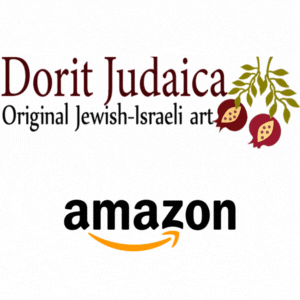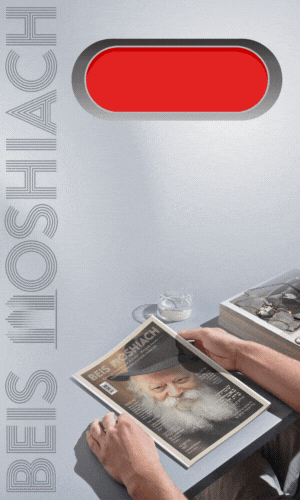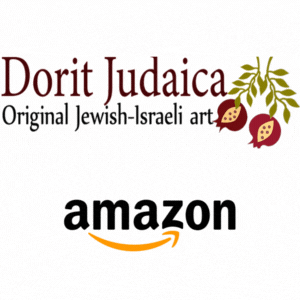The High Holidays as the Language of Love
Why Are We Here? If G-d is “perfect”, as Judaism teaches, what prompted Him to create us? What void was He seeking to fill? One answer provided in Kabbalah and Chassidus, based on many a verse in Tanach and in Talmud, is that G-d desired marriage • Full Article
Why Are We Here?
If G-d is “perfect”, as Judaism teaches, what prompted Him to create us? What void was He seeking to fill?
One answer provided in Kabbalah and Chassidus, based on many a verse in Tanach and in Talmud, is that G-d desired marriage. The most accomplished and self-sufficient bachelor—and G-d is the “perfect single,” lacking nothing—can not marry himself. Marriage necessitates the existence of someone distinct from yourself with whom to share your life, a union of husband and wife. G-d chose the Jewish people as His bride.[1] In this relationship, the bride would reveal the Divine oneness pervading the entire cosmos.
What a marriage this has been—a roller coaster of romance, affection, quarrel, and estrangement. In every generation, many counselors advocated a divorce, while others proclaimed the Groom dead. Yet, the relationship has endured, because both partners know deep down, that they ultimately belong together. When all layers are removed, the human person yearns for meaning, for union with G-d, and G-d craves a relationship with us.
The high-holiday season is the annual re-experience of the marriage between G-d and His people.[2] The five primary milestones of this season parallel the five phases of a conventional courtship and union.[3] The holidays invite us to journey through this process again to rejuvenate the relationship.
The Courtship
The Hebrew month of Elul precedes the high holidays. This month is described in Chassidic teachings as a time when “The King goes out to the field to meet with His people, greeting them with kindness and tenderness, displaying a joyous face to all.”[4]
In our present-day slang, we would call this a date.
Just as the conventional dating process allows the two people involved to become acquainted with each other, with joy and serenity, so too the month of Elul provides us with an opportunity to get to know G-d in a genuine and profound way. G-d comes out to the field, as it were, longing to meet you where you are, to connect with you in your natural and authentic state.
The Groom Proposes
G-d, apparently, is not a fan of drawn-out dating, neither is He fearful of commitment. Four weeks later, on the eve of Rosh Hashanah, He makes His proposal. “I’m crazy over you. Will you marry me?” is the question communicated to the heart of each of us as the sun sets over the horizon of the year gone by.
This is not an easy decision to make. To be married to G-d is a formidable task. It means to live with transcendence, discipline, and endless mystery. It means to challenge myself daily to go beyond my ego and insecurities, and align my posture with Divine infinity. It is the constant readiness to challenge my moral failures and to stand by the highest levels of integrity and truth. And yet, a whispering voice within persists that if we will avoid this relationship we will deny ourselves the fulfillment and happiness we are capable of achieving in our lives. We were designed to be G-dly human beings, conduits for the cosmic heart.
“Let me sleep on it,” we tell G-d.
What a night this is! The world goes haywire, says Master Kabbalist Rabbi Isaac Luriah.[5] “During the night of Rosh Hashanah,” he writes, “he consciousness animating the universe becomes weak.”[6] The great Jewish mystics would, in fact, feel physically weak during the night of Rosh Hashanah.[7]
All of existence was brought into being for the sake of this marriage. If we refuse Him, the entire creation was in vain. The entire cosmos—every galaxy, every blade of grass, every grazing animal, every electron, genome, plant, and speck of dust—awaits our decision with trepidation.
The Bride Commits
On the morning of Rosh Hashanah, a piercing sound rises from the earth: The cry of the Shofar. It is a simple, unsophisticated cry, expressing a person’s quintessential yearning to touch heaven.
We have decided. Our answer is, yes.[8]
The Wedding
The wedding day arrives. Yom Kippur is a day described as “the time of oneness”[9] in which the cosmic bride and groom forge a bond for eternity.[10]
In the Jewish tradition, the bride and groom fast on their wedding day.[11] On the day we unite with G-d, we abstain from food or drink as well.[12] The Talmud[13] teaches that upon marriage, all the sins of the groom and bride are forgiven.[14] That’s why this day is called Yom Kippur, “the day of atonement (12).”
The marriage ceremony begins with the stirring melody of “Kol Nidrei,” in which we annul our vows for the coming year. What is this all about? It is the courage we cultivate to remove the power from all those promises, vows, and addictions that tie us down, opening our neural pathways to new possibilities. During these profound moments, we attempt to free ourselves from compulsive behavior and toxic habits and let go of the traumas, pains, resentments, animosity, anger, fear, and envy, that hold us hostage to dysfunction.[15]
The traditional Jewish marriage ceremony culminates with the bride and groom entering a secluded room (“cheder yichud” in Hebrew) to spend time alone with each other. Yom Kippur as well culminates with the Neilah, or closure prayer. As the sun of Yom Kippur sets, the gates of heaven close—with you inside.
During Neilah, every soul is alone with G-d.[16]
The Celebration
When the bride and groom exit their private room, the party begins. From Yom Kippur, we leap into the seven-day festival of Sukkot, described in the Torah[17] as “the time of our Joy.”
These days are filled with feasting and ecstatic happiness. Every Jewish family builds a hut, a Sukkah, outdoors, where they celebrate for seven days the marriage between G-d and His people.[18]
We eat, drink, sing, dance, and just enjoy being one with Oneness.
Intimacy
The wedding feast is over. The guests and relatives have returned home. In the consummation of the relationship, bride and groom experience intimacy, their lives melded together as husband and wife.
So too, following the seven days of Sukkot, we reach the zenith of the High Holiday season: Shemini Atzeret and Simchat Torah, described in the writings of the Arizal, the Tanya, and the Vilna Gaon[19] as the “time of intimacy with the Divine.” During these two charged days the joy reaches its peak, as G-d and His people merge into a seamless whole. A Divine seed is planted in each of our hearts.
That’s why we recite special prayers for rain on the festival of Shmini Atzeret. What is rain? In the midst of intimacy between heaven and earth, procreative drops from heaven are absorbed, fertilized, and nurtured by mother-earth, which in time will give birth to its botanical children.[20] Shmini Atzeres is the day of intimacy when all new souls to be born that year are spiritually conceived.
The Ordinary Month
The honeymoon comes to an end and the excitement begins to fade. Now the marriage becomes about caring for each other and demonstrating trust and loyalty, as husband and wife work through the daily grind of life.
Out of the twelve months in the Jewish calendar, the only one lacking a single festive day is the one that immediately follows the High Holiday season, the month of Cheshvan. Why? Because this is the time to build a genuine relationship with our marriage Partner in our everyday lives. No fanfare or drama, just learning to find meaning and love in the daily chores of life.[21]
This is the time to discover the joy born out of a continuous relationship with G-d, during the mundane days and nights that define the bulk of our life on planet earth. It is time to discover how ordinary moments and experiences can be extraordinary — as long as the love is flowing in your veins.
37
Join ChabadInfo's News Roundup and alerts for the HOTTEST Chabad news and updates!











































